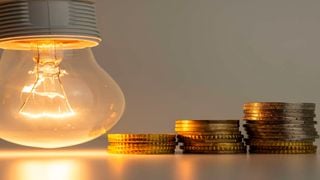
The Electricity Sector Association of Kenya say that reducing the cost of electricity cannot be addressed by just lowering the cost of production and distribution of power.
|Business
Premium
Revealed: Forces behind Kenya's high electricity bills
What you need to know:
- While the IPPs’ entry saved Kenya from load shedding, revelations on tariff variance of up to Sh50 per unit of electricity have stirred an emotive national discourse.
- To lawmakers and the vast majority of consumers, IPPs are solely to blame for the costly electricity, made worse by the increasing of retail tariffs from April and increased tapping of thermal plants, which has increased the burden of the fuel cost charge on customer billing.
- But Cabinet Secretary for Energy, Davies Chirchir reckons that the entry of IPPs in the 90s was to save the country but adds that only the diesel plants are expensive.
Costly electricity in the wake of higher retail tariffs gazetted in April, increased reliance on thermal Plants and reluctance of private power producers to lower wholesale tariffs for their electricity have heightened focus on Kenya’s power sector.
The focus has put Independent Power Producers (IPPs) on the spot, tracing Kenya’s journey with the electricity generators who entered the fray in the 1990s.
Kenya opened the power generation sector to IPPs in 90s following pressure from the World Bank and a three-year drought that exposed Kenya’s hydro plants and an economy that heavily relied on imports from Uganda.
While the IPPs’ entry saved Kenya from load shedding, revelations on tariff variance of up to Sh50 per unit of electricity have stirred an emotive national discourse.
To lawmakers and the vast majority of consumers, IPPs are solely to blame for the costly electricity, made worse by the increasing of retail tariffs from April and increased tapping of thermal plants, which has increased the burden of the fuel cost charge on customer billing.
But Cabinet Secretary for Energy, Davies Chirchir reckons that the entry of IPPs in the 90s was to save the country but adds that only the diesel plants are expensive.

Energy and Petroleum Cabinet Secretary Davis Chirchir(left) and his Principal Secretary Alex Wachira addressing journalists at Boma Hotel in Nairobi on August 28,2023 on the recent power black out in the country.
“IPPS came in at that time and they were expensive because they came to save us. When people blame IPPs for being expensive it is not true. Only the diesel plants are expensive, the most expensive is owned by KenGen,” Mr Chirchir says.
“But going forward, we need levelised costs. That way, power from the IPPs will not be expensive at the start and gradually reduce as the PPAs near its end.”
Currently, some Kenya Power has PPAs with some 21 IPPs, including the State owned KenGen, far cry from the dire state of affairs of the 1990s when a funding embargo and prolonged drought tested Kenya’s then weak electricity supply.

Kenya Power technicians carry out repairs on a transformer on Haile Selassie Road in Mombasa on December 5, 2020.
World Bank had suspended funding of power generation plants in Kenya in the 90s, citing poor economic governance and reluctance to reform the power sector by the then administration of the late President Daniel Moi.
The embargo put on ice all plants to build new power generation plants hit Kenya that was then overly- relying on imports from Uganda amid rationing schedules as Kenya Power struggled to match the demand.
Additionally, a three-year drought that lasted to 1992 squeezed the hydro plants, prompting over- reliance on the Uganda power imports and ultimately, decisions by the then administration that opened the power generation sector to IPPs.
But the World bank— one of the single biggest funders of Kenya Power to date— made a u-turn in the 90s and approved a $125 million credit facility under a program dubbed Energy Sector Reform and Power Development Project after Kenya met key conditions.
Key conditions of the World Bank’s credit was for Kenya to open up the electricity generation sector to the private sector, reforming regulatory framework, ultimately setting the stage for entry of IPPs to generate power and sell it to Kenya Power.
Seven IPPs had their plants commissioned and linked to the national grid between 1998 and 2000, injecting some 460 Megawatts to the grid.

Lake Turkana Wind Power project in Laisamis, Marsabit County.
But the deals signed mostly for between 20 to 25 years have now turned into a headache for the country, with lawmakers blaming the IPPs, notably the diesel-powered plants for the costly power.
The State-owned KenGen has the cheapest power at Sh4.71 a unit compared to the Muhoroni Gas Turbine which had the most expensive power as at end of May Sh56.73 per unit.
Iberafrica Power sells a unit to Kenya Power for Sh28.24 making it the second most expensive followed by Rabai Power at Sh24.04 a unit.
KenGen also supplies at least 60 percent of the electricity to Kenya Power, making it a key plank in ensuring supplies to the more nine million Kenya Power customers.
Mr Chirchir says that Kenya is going heavy on its vast geothermal potential through Public Private Partnerships to speed up projects and also avoid straining the Exchequer given the cost nature of developing a geothermal plant.

A KenGen power plant. KenGen will lose billions in revenue after Kenya Power declined to renew the supply contracts of two of its diesel plants as part of a shift to cheaper renewable energy.
“We are doing PPP-accelerated investments in geothermal to speed up. We are working with Masdar of Abu Dhabi and Pertamina of Indonesia to accelerate our geothermal development,” Mr Chirchir says.
“Our grid is now 49 percent geothermal from a time in early 90s when it was at 10 percent. It is our base load now.”
IPPs (bar KenGen) have defended their costly electricity saying that the tariffs are meant to compensate for the investments (commercial loans and shareholder funds) used to build the plants.
The lobby for IPPs now holds that seeking new agreements upon the lapsing of the current PPAs will also ensure cheaper power given that the investment will have been recovered in the current deal.
“Power plants have a useful life greater than the 20 years of a template PPA. Power plants at this stage are fully paid for while the technology is still fit for purpose,” George Aluru, chair of the Electricity Sector Association of Kenya, the lobby for IPPs says.
“The power produced from these plants would be cheaper as the financing costs and margins have been fully recovered.”
But a sticky issue in the PPAs has been the take or pay clause where consumers through Kenya Power must pay the power plants for any power generated even if it is not used.
This is because the plants, mainly thermal, are not base load but are always on standby in cases when demand surges or production from other sources notably hydro drop and threaten supply and reliability.
Besides the higher tariffs, take or pay clause, denomination of the PPAs in foreign currency (dollar and euro) have also been flagged for making electricity costly.
IPPs have been vocal in fighting the push to relook the foreign-currency denominated deals on grounds that this would present a challenge given that the revenue they raise to finance their projects is denominated in foreign currency.
Hopes of having shilling-denominated loans that would then take out the forex adjustment element on customer bills took a hit after the government ruled out the idea late last month.
“The sector recently conducted a feasibility study on the viability of Kenya shilling denominated PPAs and the study found that this option is not viable,” Energy Cabinet Secretary Davies Chirchir recently said.
The foreign currency surcharge is done every month on customer bills and is meant to reimburse Kenya Power and producers for fluctuations of hard currencies for spending denominated in dollars and euros such as loan repayments.
Demand for electricity continues to rise on growing economic activities, further piling pressure on Kenya Power to ensure stable and reliable supply.
For an economy whose peak demand hit 2,149 MW last December and highest energy gross demand was 39,584.60 MWh on July 7, the critical role of IPPs is only growing but also, the question of affordable power sources.
Kenya Power had nine million customers as at December last year and the number has been projected to rise significantly in the financial year ended June.
With an extended grid and increasing peak, the reliability of the grid offers another test besides the talk of lowering the prices.
KenGen acting Managing Director Abraham Serem notes that the role of fully evacuating the electricity generated and onboarding new yet affordable power plants cannot be downplayed.

KenGen acting Managing Director and CEO Abraham Serem before the Committee on Implementation at Continental House Nairobi on Thursday, August 17, 2023 on the report of the Departmental Committee on Energy on its consideration of public petition regarding degradation of the Environment along Sondu-Miriu Dam due to failure by KenGen to fully comply with the Environmental Impact Assessment of 1995.
“We are not safe at the moment. Kenya is at about four percent yet the global standard is 15 percent. Four percent is very uncomfortable because if a major plant were to go down, it would wipe out all that,” Mr Serem says.
The country is now pegging hopes on implementation of recommendations of a presidential taskforce that presented its report two years ago. The success of the task force's recommendations however remains a long shot, according to Mr Chirchir.
Kenya Power told Parliament that renegotiation of the deals between the IPPs and Kenya Power as recommended by a presidential task force in 2021, where to start last month and be concluded by end of the year.
“Negotiation teams under the Ministry of Energy and Petroleum are preparing to engage all power purchase agreements (PPAs) to reduce the cost of power. Negotiations will start in July and end by December 2023,” Kenya Power told lawmakers last month.
The taskforce that was appointed by the Uhuru Kenyatta administration had singled out renegotiation of the agreements with IPPs and foreign-currency denominated power purchase agreements as the biggest driver of the expensive electricity.
But none of the major IPPs including KenGen has so far agreed to lower its wholesale tariffs, with only three small producers agreeing to reduce their prices last year.

GDC and Kenya Power have signed a Steam Purchase Agreement in relation to the electricity to be generated at the Menengai Geothermal Project. In the agreement, Kenya Power will pay GDC $2cents per kWh while the Independent Power Producers (IPPs) will be paid $5cents per kWh.
The three IPPs account for a combined share of less than one MW, out of the 3,000 MW supplied to Kenya Power.
But even as Kenya walks along the new policy of least cost power development plan (LCPDP) that emphasizes clean energy, energy auction and technology, Mr Aluru calls on the need for competitive bidding to tap new plants.
“There should be competitive tendering for new plants where there is use of a standardized PPA that is pre-agreed with lenders and support instruments agreed with the government,” Mr Aluru says.
“The acquisition should be by an independent office that will have representatives from the energy ministry, Treasury, State law office and an IPP office.”
Mr Aluru cautions that Kenya should set up a transition mechanism for yet-to-be built plants whose deals have been signed.
Several firms signed PPAs with Kenya Power a year ago but there have been delays in building the plants.
“A transition mechanism for the ones that have been signed and not yet built should be developed,” Mr Aluru adds.
Notable cases include the $108 million plant to be constructed by British firm, Globeleq plant and a ($97 million) plant to be built by New York-based power firm Orpower 22.
Each of the above plants to be built in the Menengai region of Nakuru will have a generation capacity of 35 MW.
Ormat Technologies and Quantum Power were awarded the tenders in 2014, at the same time with Sosian Energy, a company linked to the family of the late President Daniel Moi. Quantum Power later sold its licence to Globeleq.
Sosian Energy has since completed its plant and linked to the national grid at the start of June, making initial supplies of 18 MW.





